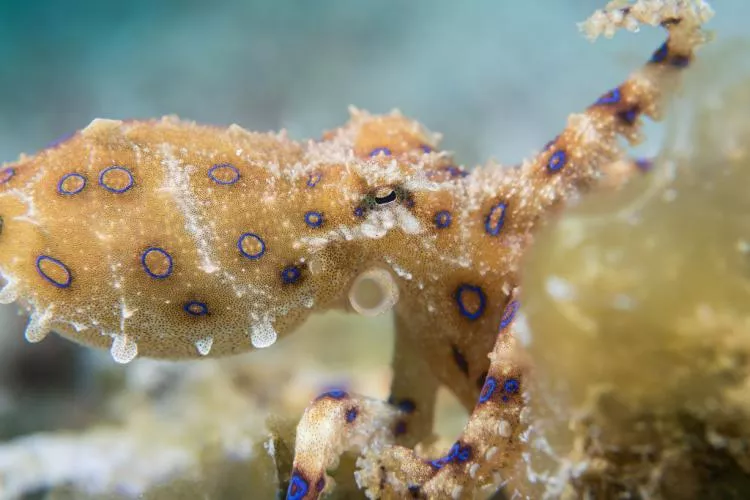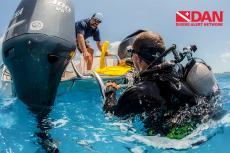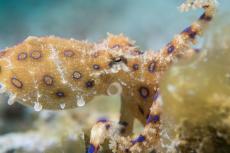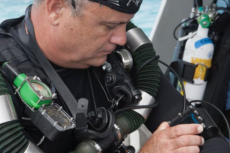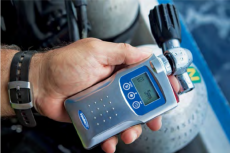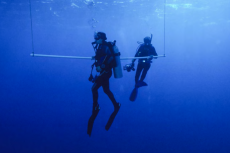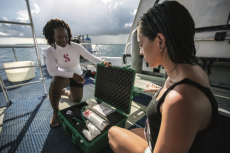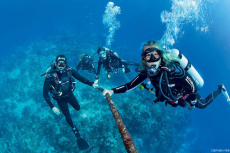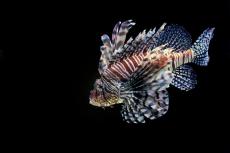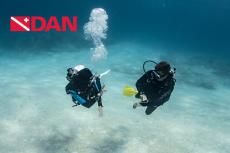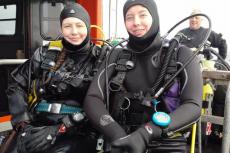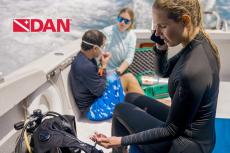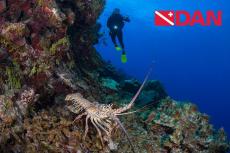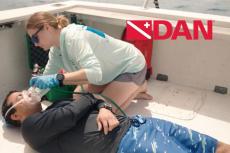Stings & Scrapes — Part 2
In this installment of our series on marine life injuries, we will be covering wounds caused by urchins, stingrays and octopuses. These wounds have the potential to be more serious than injuries from other marine organisms, but they are easy to prevent with a little knowledge and planning. Pay close attention to your surroundings and view these creatures from a distance, and it is unlikely you will encounter trouble. If you do get injured, here is what you will need to know.
Stingrays
Stingrays are frequently considered dangerous or threatening but largely without cause. These are shy fish that generally present no threat to divers unless stepped on or deliberately antagonized. Most stingray injuries occur in shallow water when beachgoers step on the animals. Stingrays can vary in size from just a few inches to more than six feet wide and have a serrated barb at the end of their tails that can cause serious injuries. At the base of the barb are two venomous glands that can cause infections and exacerbate an initial penetrating wound.
These barbs can easily cut through wetsuit material and cause lacerations or puncture wounds, and if a barb breaks off in a wound, it may require surgical care.
Treatment of stingray injuries will vary based on the type and location of injury, but many can be treated like traditional puncture wounds. Remove the injured party from danger, control bleeding and clean the wound thoroughly, then seek immediate medical attention. Due to the nature of stingray venom and the resulting infection risk, these wounds must be addressed by a professional.
Urchins
Sea urchins are echinoderms, a phylum of marine animals shared with starfish, sand dollars and sea cucumbers. Fearsome relatives these may not be, but urchin spines can cause painful injuries that can last for weeks. The creatures are omnivorous and subsist primarily on algae and decomposing animal matter. They have tubular feet that are covered in hollow spines, which can easily penetrate a diver’s wetsuit, puncture the skin and break off. These puncture wounds are typically associated with redness and swelling.
Pain and injury severity range from mild to severe, depending on the location of the injury. Very rarely, life-threatening complications can occur. Preventing urchin wounds is as simple as practicing good buoyancy and keeping an eye out as you walk into the water. Know the types of areas that urchins inhabit (typically, these are rocky and algae-covered), and keep a particularly close eye out if your entry involves such terrain.
Treating urchin injuries depends significantly on the location of the wound—a penetrating injury near a major vein or artery may require surgery, while a single barb with little penetration may be addressed without medical intervention. Begin by applying heat to the area of the wound for 30 to 90 minutes while removing superficial spines. Wash the area without forceful scrubbing (to avoid causing additional damage if there are still some spines embedded in the skin). Apply antibiotic ointment to the skin and seek medical evaluation if there seem to be additional embedded spines or any signs of infection.
Blue-ringed octopus
The blue-ringed octopus has the unique distinction of being the only cephalopod known to be deadly to humans. This small species of venomous octopus lives in tropical tide pools from southern Japan to the coastal reefs of Australia and the western Indo-Pacific. They rarely exceed eight inches in size and are marked distinctively with blue iridescent rings that cover their yellow bodies. Note that this color is only displayed when the animal is hunting, mating or disturbed. At rest, the blue-ringed octopus may display an overall yellowish, grey or beige coloration without blue rings.
These creatures have a strong beak similar to that of a parrot, and a paralytic venom called tetrodotoxin, which can be nearly 10,000 times more potent than cyanide. The lethal dose of this venom for most adults is about 0.5 milligrams (about the amount that could fit on the head of a pin). A bite from a blue-ringed octopus is usually painless or no more painful than a bee sting but should be taken very seriously. Neurological symptoms are common with blue-ringed octopus envenomation, and symptoms can progress to paralysis or death. Symptom onset typically occurs within minutes and includes paresthesia of the lips and tongue, excessive salivation, trouble with pronunciation, difficulty swallowing, sweating, dizziness and headache. In severe cases, these symptoms may progress to muscle weakness, loss of coordination, tremors and paralysis.
There is no antivenom available for tetrodotoxin, so care for envenomation is supportive. Wounds should be cleaned with freshwater and pressure-immobilized, and injured divers should be monitored and transported to emergency medical care as quickly as possible. Due to the potential lethality of a blue-ringed octopus bite, it is imperative that anyone with a suspected bite seek emergency care immediately, rather than wait for symptom onset.
- Log in to post comments


